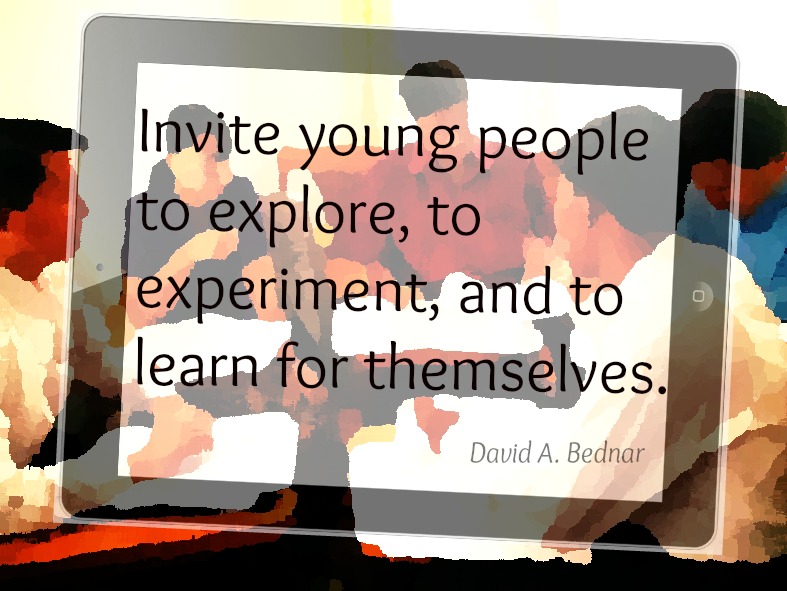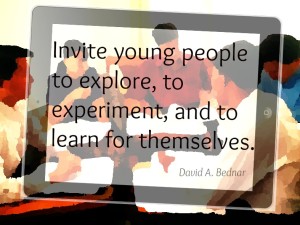The Mormons rolled out a new curriculum for their teens this year. The program is being used in Sunday classes and in weekday religion classes, as well. One unique aspect of the class is that it is very technology-oriented.
 Most Mormon classes are taught from a printed manual written many years ago. The new program is online, which means it can be updated as often as necessary. If a new talk or even occurs the week before the lesson is supposed to be taught, that can be included in the resources.
Most Mormon classes are taught from a printed manual written many years ago. The new program is online, which means it can be updated as often as necessary. If a new talk or even occurs the week before the lesson is supposed to be taught, that can be included in the resources.
The new curriculum includes music, videos, and pictures, and many teachers are using their tablets or laptop computers to assist them in presenting the lesson. Teens can find those resources online, which means they can re-watch the videos or download the music at home. It brings in tools that are familiar and comfortable to teenagers and help visual learners process the material better.
The new lessons are not really teacher-taught. The teacher is more like a mentor or guide. Each month has a theme and the themes are listed with smaller topics, different ones for Sunday School and the class that follows, which is Young Men or Young Women. The students will study the same topic all month, but from different perspectives. The teachers select from a list that has more topics than can be covered, so she (or he) can choose the ones her class most needs. Students can even request a focus from the list.
 The teacher studies all the materials and looks over all the suggested resources. Then she chooses the ones she feels will best help her own class. However, she won’t be standing in front of the class giving a lecture. Instead, she will guide the students to find answers to questions. For instance, she might ask why we have trials in life. She might show a video and play some music and then divide the class into groups. Each group will be given a reference material and a list of places the answers might be found. They study the materials, figure out the answers to the questions—and then teach it to their own classmates. In this way, a range of materials can be explored in a short time, with each group sharing the results of its research.
The teacher studies all the materials and looks over all the suggested resources. Then she chooses the ones she feels will best help her own class. However, she won’t be standing in front of the class giving a lecture. Instead, she will guide the students to find answers to questions. For instance, she might ask why we have trials in life. She might show a video and play some music and then divide the class into groups. Each group will be given a reference material and a list of places the answers might be found. They study the materials, figure out the answers to the questions—and then teach it to their own classmates. In this way, a range of materials can be explored in a short time, with each group sharing the results of its research.
Students are free to ask questions that can be answered by the teacher or by the other students. Students, in fact, are encouraged to be the ones to give the answers. By asking and answering their own questions, a discussion begins and the lesson takes on a life of its own. It travels in the direction that meets the needs of the students. If they are particularly worried about something, or something is in the news that week related to the topic, they are able to explore it. At the end of the lesson, they decide if they understand that day’s topic well enough or if they’d like to continue it the following week.
During the week, students are expected to study the topic on their own in their own way, to have real-world experiences with the topic, and to come to class ready to share what they learned and to ask about what they didn’t understand. They take responsibility for their own spiritual growth—a method that is very different from the way they are used to learning. Many teens are finding it a challenge to learn this way at first, since it isn’t usually done that way in school and wasn’t done that way in church. However, once they get used to it, they love it. They love being able to participate, to have a variety of teaching methods, and to have more control over their learning experience.
Check it out for yourself:


